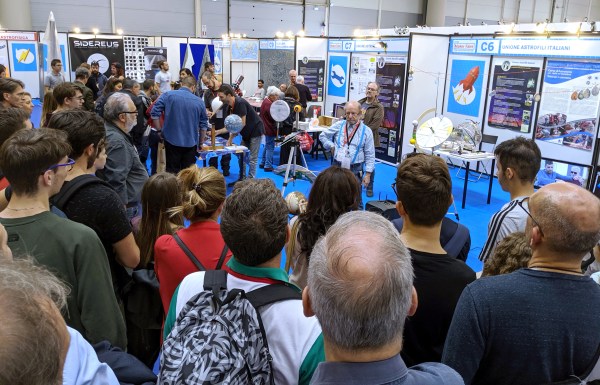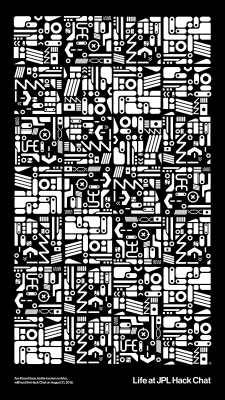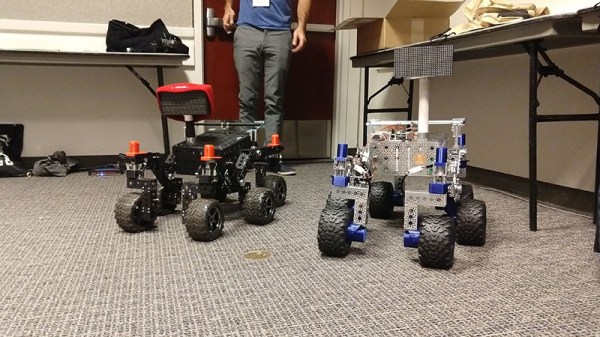There is a population of retrocomputing enthusiasts out there, whose basements, garages, and attics have been taken over by machines of years past. Most of the time, these people concentrate on one make; you’re an Apple guy, or you’re a Commodore guy, or you’re a Ford guy, or you’re a Chevy guy. The weirdos drive around with an MSX in the trunk of an RX7. This is the auction for nobody. NASA’s JPL Lab is getting rid of several tons of computer equipment, all from various manufacturers, and not very ‘vintage’ at all. Check out the list. There are CRT monitors from 2003, which means they’re great monitors that weigh as much as a person. There’s a lot of Sun equipment. If you’ve ever felt like cleaning up a whole bunch of trash for JPL, this is your chance. Grab me one of those sweet CRTs, though.
Last week, we published something on the ‘impossible’ tech behind SpaceX’s new engine. It was reasonably popular — actually significantly popular — and got picked up on Hacker News and one of the Elon-worshiping subreddits. Open that link in one tab. Now, open this link in another. Read along as a computer voice reads Hackaday words, all while soaking up YouTube ad revenue. What is our recourse? Does this constitute copyright infringement? I dunno; we don’t monetize videos on YouTube. Thanks to [MSeifert] for finding this.
Wanna see something funny? Check out the people in the comments below who are angry at a random YouTuber stealing Hackaday content, while they have an ad blocker on.
Teenage Engineering’s OP-1 is back in production. What is it and why does it matter? The OP-1 is a new class of synthesizer and sampler that kinda, sorta looks like an 80s Casio keyboard, but packed to the gills with audio capability. At one point, you could pick one of these up for $800. Now, prices are at about $1300, simply because production stopped for a while (for retooling, we’re guessing) and the rumor mill started spinning. The OP-1 is now back in production with a price tag of $1300. Wait. What? Yes, it’s another case study in marketing: the best way to find where the supply and demand curves cross is to stop production for a while, wait for the used resellers to do their thing, and then start production again with a new price tag that people are willing to pay. This is Galaxy Brain-level business management, people.
What made nerds angry this week? Before we get to that, we’re gonna have to back track a bit. In 2016, Motherboard published a piece that said PC Gaming Is Still Way Too Hard, because you have to build a PC. Those of us in the know realize that building a PC is as simple as buying parts and snapping them together like an expensive Lego set. It’s no big deal. A tech blog, named Motherboard, said building a PC was too hard. It isn’t even a crack at the author of the piece at this point: this is editorial decay.
And here we are today. This week, the Internet reacted to a video from The Verge on how to build a PC. The original video has been taken down, but the reaction videos are still up: here’s a good one, and here’s another. Now, there’s a lot wrong with the Verge video. They suggest using a Swiss army knife for the assembly, hopefully one with a Philips head screwdriver. Philips head screwdrivers still exist, by the way. Dual channel RAM was completely ignored, and way too much thermal compound was applied to the CPU. The cable management was a complete joke. Basically, a dozen people at The Verge don’t know how to build a PC. Are the criticisms of incompetence fair? Is this like saying [Doug DeMuro]’s car reviews are invalid because he can’t build a transmission or engine, from scratch, starting from a block of steel? Ehhh… we’re pretty sure [Doug] can change his own oil, at least. And he knows to use a screwdriver, instead of a Swiss army knife with a Philips head. In any event, here’s how you build a PC.
Hackaday writers to be replaced with AI. Thank you [Tegwyn] for the headline. OpenAI, a Musk and Theil-backed startup, is pitching a machine learning application that is aimed at replacing journalists. There’s a lot to unpack here, but first off: this already exists. There are companies that sell articles to outlets, and these articles are produced by ‘AI’. These articles are mostly in the sports pages. Sports recaps are a great application for ML and natural language processing; the raw data (the sports scores) are already classified, and you’re not looking for Pulitzer material in the sports pages anyway. China has AI news anchors, but Japan has Miku and artificial pop stars. Is this the beginning of the end of journalism as a profession, with all the work being taken over by machine learning algorithms? By vocation, I’m obligated to say no, but I have a different take on it. Humans can write better than AI, and the good ones are nearly as fast. Whether or not the readers care if a story is accurate or well-written is another story entirely. It will be market forces that determine if AI journalists take over, and if you haven’t been paying attention, no one cares if a news story is accurate or well written, only if it caters to their preexisting biases and tickles their confirmation bias.
Of course, you, dear reader, are too smart to be duped by such a simplistic view of media engagement. You’re better than that. You’re better than most people, in fact. You’re smart enough to see that most media is just placating your own ego and capitalizing on confirmation bias. That’s why you, dear reader, are the best audience. Please like, share, and subscribe for more of the best journalism on the planet.
 Our Hack Chats are live community events in the Hackaday.io Hack Chat group messaging. This week we’ll be sitting down on Wednesday, June 10 at 12:00 PM Pacific time. If time zones have you down, we have a handy time zone converter.
Our Hack Chats are live community events in the Hackaday.io Hack Chat group messaging. This week we’ll be sitting down on Wednesday, June 10 at 12:00 PM Pacific time. If time zones have you down, we have a handy time zone converter.



















